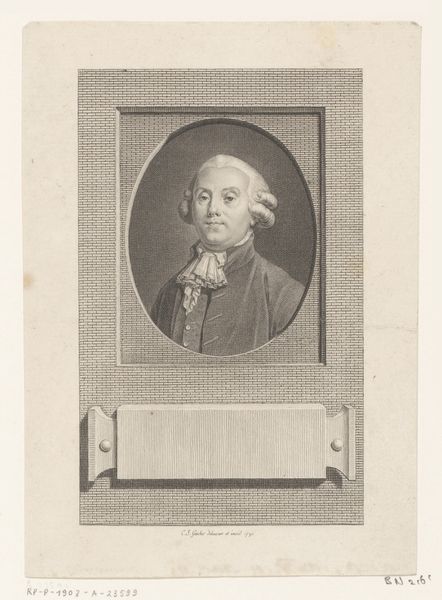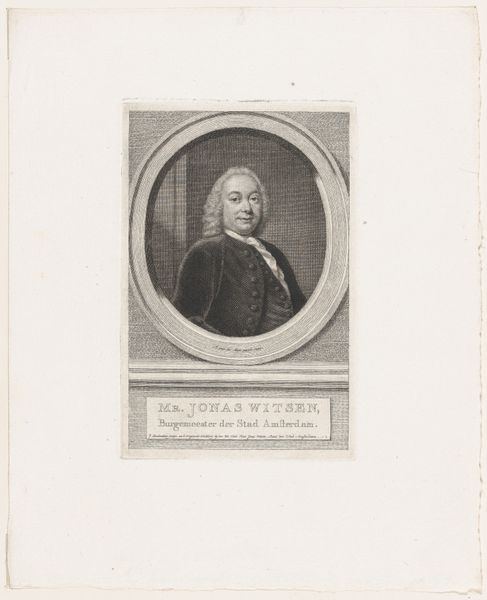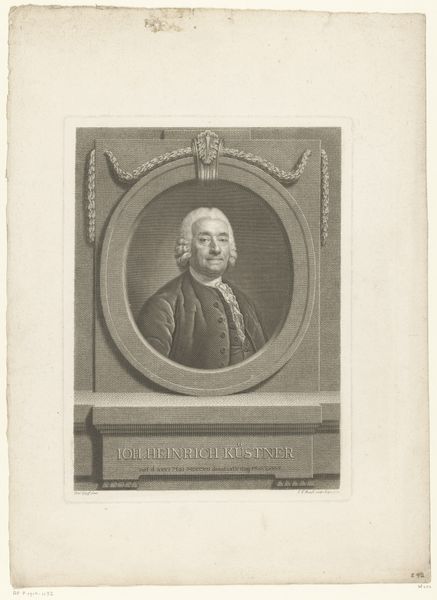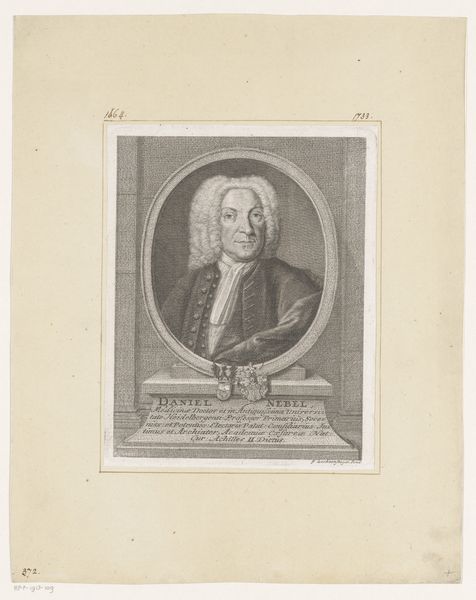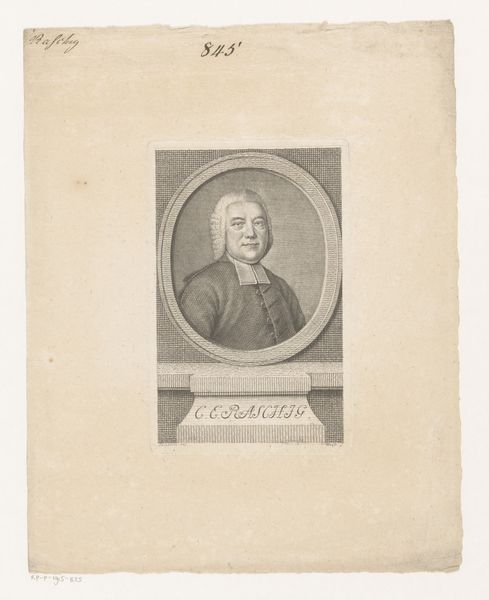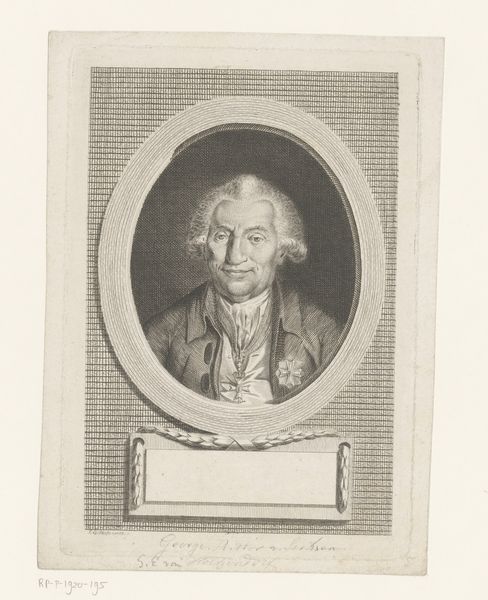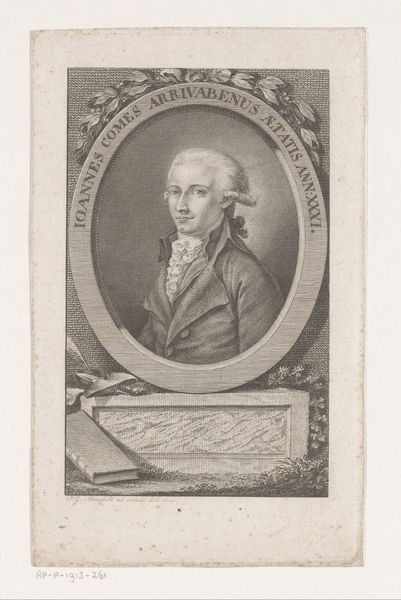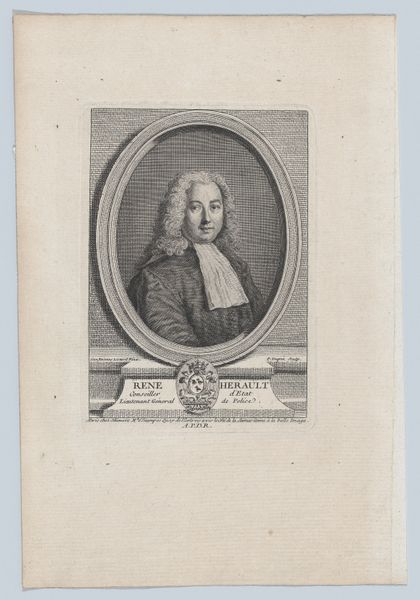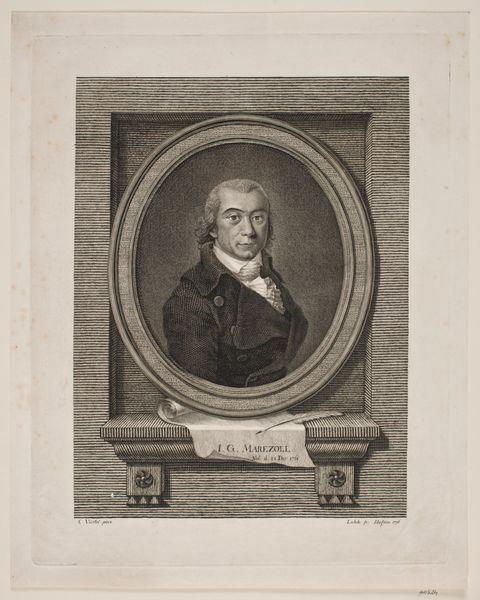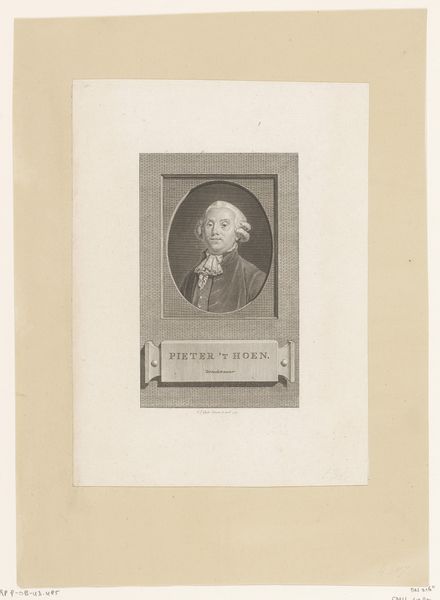
Dimensions: height 171 mm, width 104 mm
Copyright: Rijks Museum: Open Domain
Curator: This is a print dating from sometime between 1740 and 1804, currently held in the Rijksmuseum. The title given to this work is 'Portret van Albrecht von Haller.' It’s an engraving by Gottlieb Leberecht Crusius. Editor: At first glance, the engraving possesses a somber air. It almost feels as though the subject is observing us from within a stone frame. Curator: Indeed. Let's focus on Crusius’ engraving technique. The use of fine lines, strategically placed, creates a remarkable sense of volume, especially in the subject's face and attire. Notice the detail in the rendering of fabrics—the way light interacts with the folds. Editor: Yes, but what is revealed by how the piece uses structure and composition? Note how von Haller is carefully framed—almost barricaded—behind this highly stylized barrier bearing his name, yet also half-hidden in shadow, only partially revealed, as if this is a deliberate obfuscation of the subject by the work, or the era which it evokes. He’s also posed at eye-level, which puts him on an equal plane as the viewer. This wasn't always typical of Baroque portraiture. Curator: A compelling interpretation! We can see a symbolic framing achieved through a clear Baroque aesthetic with its strong lines and contrast of light. And while portraits from this era often celebrated status, the details, in the way you say, here seem restrained and intellectual. Editor: I wonder if we might understand this, considering his place as an eminent physician. The Age of Enlightenment gave rise to the accessibility and authority of knowledge, and men like Albrecht von Haller stood as guardians of information and the advance of scientific exploration, albeit still limited by the class strictures of their time. What secrets does the frame seek to conceal, and for whom is von Haller presenting his image? Curator: The questions you raise place this print within the complex power dynamics of its time. It's fascinating to consider how a portrait, seemingly straightforward, can become a site of inquiry into societal norms and values. Editor: Looking again, that slight unease of my initial reaction shifts. It's as though this piece anticipates future interpretations and deliberately obscures itself, perhaps hoping to reveal other more lasting truths in its quiet gaze.
Comments
No comments
Be the first to comment and join the conversation on the ultimate creative platform.
